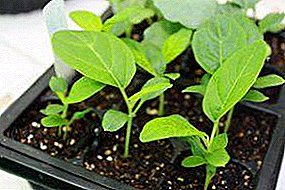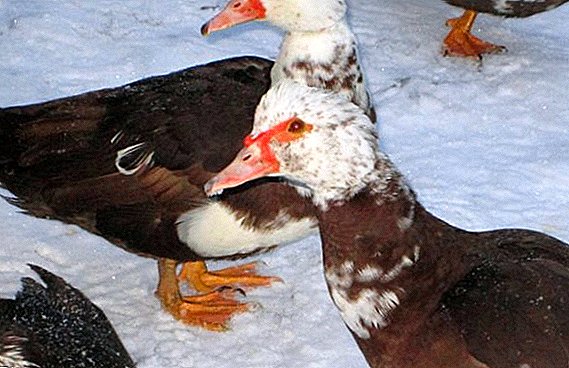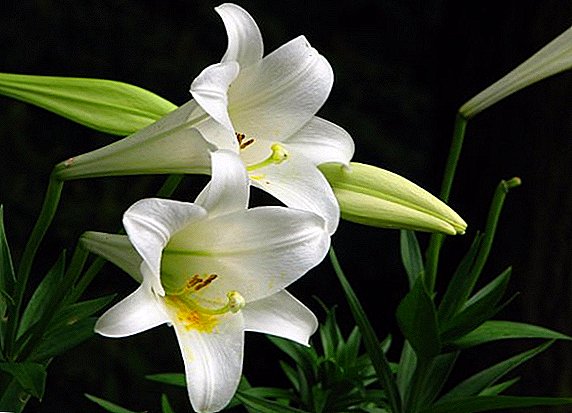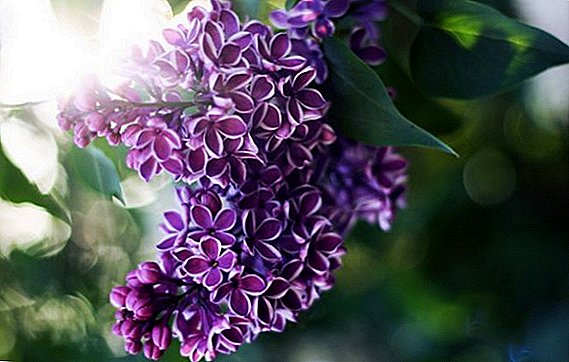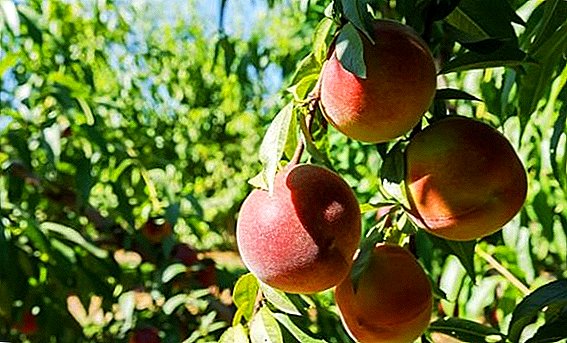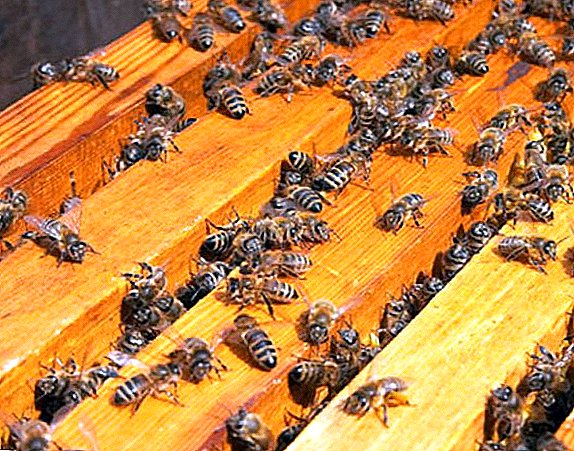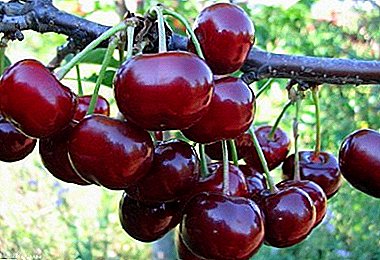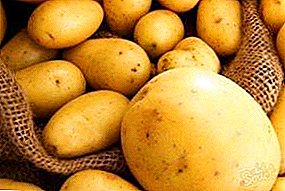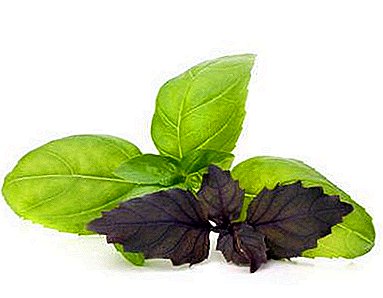
It is impossible to imagine the cuisine of many southern and eastern countries of the world without fragrant, tasty and very useful spices - basil.
With success, our housewives use it, adding to meat dishes or salads. Useful properties of this plant have long been known, it is successfully used in different spheres of life. Therefore, the issue of growing this spice has become very relevant. The most common method is rassadny.
In the article we will consider all the features of the method of growing spices with seedlings. We give tips on planting seeds, choosing a suitable container and the nuances of plant replanting.
The benefits of planting spicy grass at home
Like any technology, basil cultivation method has its pros and cons. To the positive side of the case can be attributed to the fact that when growing seedlings a gardener selects the most viable plants for planting in open ground.
Also in a limited space it is easier to create the conditions necessary for the germination and development of seedlings, to control the composition of the soil. In addition, basil grown from seedlings, you can quickly begin to eat.
A little about the disadvantages: the process of sowing, care, dive seedlings take a lot of time and will require a lot of effort gardener. Another disadvantage is that the young escape, which has changed its habitat, will have to adapt to new conditions.
How fast is growing?
Basil, planted in open ground in the form of seedlings, will give the first “harvest” much earlier, as this is in fact a formed plant. Typically, this spice can begin to cut from the moment when it grows to 12 - 15 cm. On average, it takes about two weeks from the moment of landing in the ground.
Which varieties are best suited?
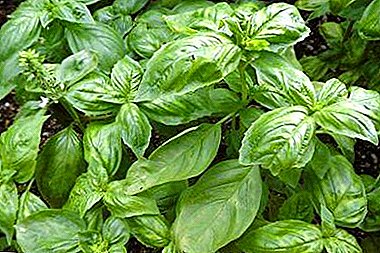 "Caramel". Mid-season variety. The ideal variety for salads, as it has a light sweet taste of fruit caramel.
"Caramel". Mid-season variety. The ideal variety for salads, as it has a light sweet taste of fruit caramel.- "Philosopher". Violet mid-season variety of basil and spicy taste and clove notes in aroma. Height - up to 60 cm.
- "Anisic". The taste and aroma of green leaves resembles anise.
- "Table". Tall variety with juicy green leaves and bright taste.
- "Citric". Low grade with pale green foliage. In addition to cooking, it is widely used in medicine.
How to plant seeds?
- Seeds soaked in water within 1 to 2 days are laid out on the surface of the moistened substrate, which is poured into a container.
- On top of the seed, it is crushed with earth (up to 0.8 cm), moistened with a spray bottle.
- The container is covered with glass to create greenhouse conditions and is placed in a shaded and warm place, the temperature in which it is necessary to maintain the level (+ 23C - + 28C).
After the appearance of the first shoots, the glass should be removed, the capacity should be rearranged to a bright place, or it should be provided with additional light, the temperature in the room should be reduced to + 16C - + 20C.
We offer to watch a useful video on how to plant basil seeds in seedlings:
What capacity is suitable for sowing?
For sowing basil seeds, plastic containers, transplant cassettes, peat tablets, and wooden crates are commonly used; other tools are used: food trays, small flower pots, disposable cups, etc.
The material from which the container is made does not play a special role, but it is necessary to make drain holes in the bottom of the container. Recommended tank height - 7-8 cm; the size of the container may be free, but it is better if the container is mobile and compact: it will have to be moved repeatedly from place to place, put on a window sill.
How long does it go up?
The first shoots, when the temperature is observed, appear already after 7–15 days, the first pair of true leaves will appear, as a rule, after 2 weeks, and 45–60 days pass in total until the seedlings emerge into the ground.
Care
Home care for seedlings is systematic watering (once in 2 - 3 days), regular feeding (once every 2 weeks with universal fertilizers based on organic compost or gummats), diving (seating on individual pots after 2 true leaves appear) and pinching (removing the top of the plant after 5 true leaves appear) .
Conditions for transfer to the ground
But at the same time, it is necessary to take into account, first of all, the weather conditions: the ground must be heated to + 15C, and the threat of frost is completely passed. But if the heat does not want to be installed in any way, then it is necessary to postpone the landing.
Similar weather conditions will be established in the southern regions in April, and in the northern latitudes - the end of May - the beginning of June. Accordingly, in these months, and it is necessary to plant seedlings in open ground.
How and where to transplant?
 For those who plan to grow basil all year round on the windowsill, you can plant several seedlings of seedlings in pots.
For those who plan to grow basil all year round on the windowsill, you can plant several seedlings of seedlings in pots.
- Mix in equal parts humus, peat, garden soil.
- Pour the mixture onto a baking tray with a thickness of not more than 5 cm and send to the oven preheated to + 75 ° C - + 95 ° C for 30-40 minutes.
- In a bright pink solution of potassium permanganate, immerse drainage for 30 minutes (expanded clay, broken brick, gravel, crushed stone), then dry it.
- It is necessary to prepare a plastic pot (volume - 1.5 - 2 liters), wiping it with alcohol.
- At the bottom of the tank, fill the drainage layer (2–3 cm), then the soil layer, whose height depends on the volume of the root system of spice sprouts (the larger the roots, the less soil).
- Holding the young plant in the center of the pot with your hand, fill all the voids with the soil, without too much sapling (according to the previous line of penetration).
- To fix the plant, the soil should be gently rubbed around the stem.
- Substrate in the tank should be moistened.
Transplanting basil seedlings in open ground has the following steps::
- On the plot, choose a place that is protected from gusts of wind and drafts, well lit throughout the daylight hours.
- In the autumn it is necessary to dig up the soil well, adding peat or river sand, fertilizers: per 1 m 2 2 - 5 kg of humus or compost, 20 g of superphosphate, 10 g of potassium salt.
- In the spring to loosen the selected area to a depth of 10 - 12 cm.
- Dig holes 6–10 cm deep at a distance of 20–25 cm from each other and 30–40 cm between rows.
- A handful of urea must be added to each well and 1 liter of distilled water must be poured.
- The plant, carefully removed from the tank with an earthy clod, is placed in a hole, covered with earth to the lower bud. The earth is crushed around the trunk with his hands.
Next steps
After transplanting the seedlings into the open ground, it is necessary to provide the plant with systematic watering as the topsoil dries out.
In no case basil can not be poured from a hose with tap water - only well settled and heated in the sun. After watering the soil around the bush should be loosened to avoid the formation of a dry peel and the appearance of weeds.
Once a month, the spice needs to be fed. For these purposes, suitable solutions nitrofoski or ammonium nitrate (1.5 tablespoons. 1 liter of water). When planting in the soil the top of the seedling must be pinched, if this has not been done before. Emerging inflorescences should be removed.
Of course, it is much easier to purchase ready-made basil in a store or on the market. But basil grown from seed with your own hands is much tastier. In addition, he will bring more positive emotions to the summer resident who started this uncomplicated but painstaking business.


 "Caramel". Mid-season variety. The ideal variety for salads, as it has a light sweet taste of fruit caramel.
"Caramel". Mid-season variety. The ideal variety for salads, as it has a light sweet taste of fruit caramel.